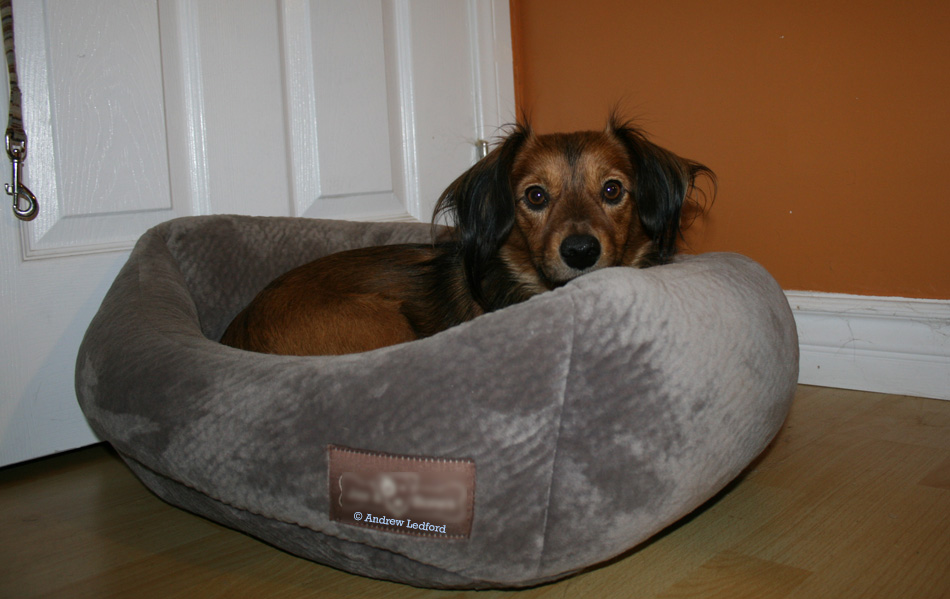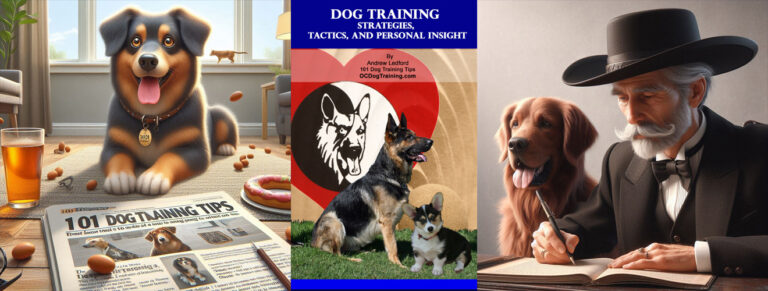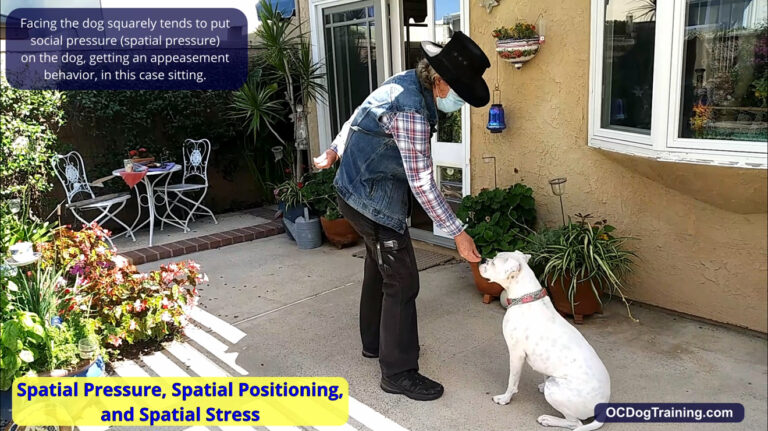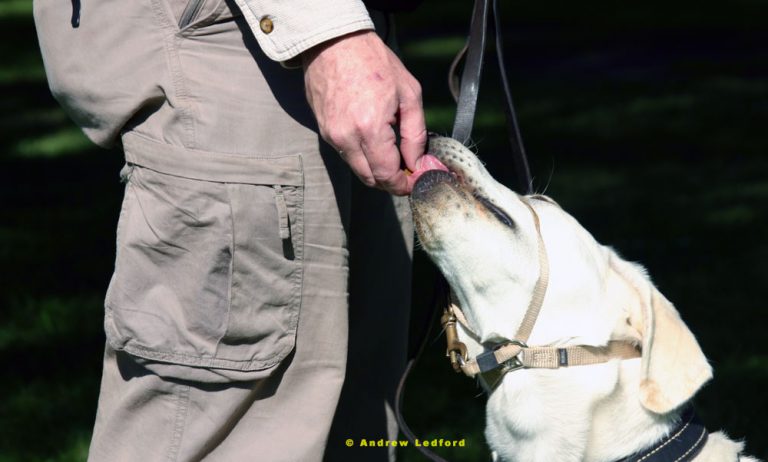Don’t Ignore Good Dog Behavior – Dog Training Tip 2
Too often we ignore the dog when it’s behaving and pay attention to it when it’s misbehaving. Attention in the form of looking at, talking to, or touching can all reward behavior.
Ignoring Good Dog Behavior is Easy When We Are Busy.
Everyone is busy going about their daily tasks, so when the dog is behaving nicely, it’s easy to ignore, especially when focused on our current activity. You need to develop an awareness or sensitivity to what your dog is doing.
Once you’re more aware of your dog’s behavior, you’ll find many times during the day to reward it for being a good dog.
A big component to shaping good dog behavior is rewarding little desirable behaviors that occur throughout the day.
It’s the rhythms of our daily lives that make up our own life narrative and the same is true for our dogs.
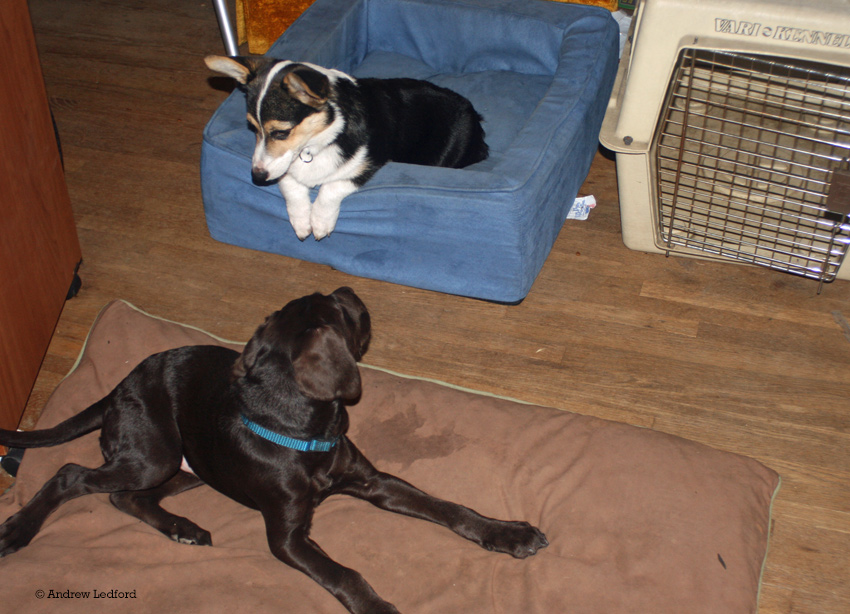
Don’t ignore even the smallest improvement in behavior.
Many times it’s also important to reinforce certain parts of a behavior sequence. Sometimes the dog will perform a behavior that needs to occur before the desired behavior. Don’t ignore the precursor to the behavior you want.
When rewarding a behavior that comes before what’s desired, don’t do it in a way that encourages the wrong behavior. In these situations stimulating undesirable behavior often involves poor timing and/or inappropriate intensity.
Housebreaking/potty training is a good example. Often I’ll be talking to the owner of a dog while they’re telling me the dog never lets them know it needs to go out to potty. While we’re talking the dog goes towards the door and walks in a semicircle.
If I can get to the door in time we have a great teaching moment and learning opportunity. If for some reason I can’t get to the door in time, we have an accident.
Until I point this behavior out, the owner has not rewarded this dog going to the door. Once we start rewarding the dog by letting it out, the behavior is strengthened and becomes more obvious. As the behavior is rewarded, it’s shaped into an unmistakable indicator the dog needs to go out to potty.
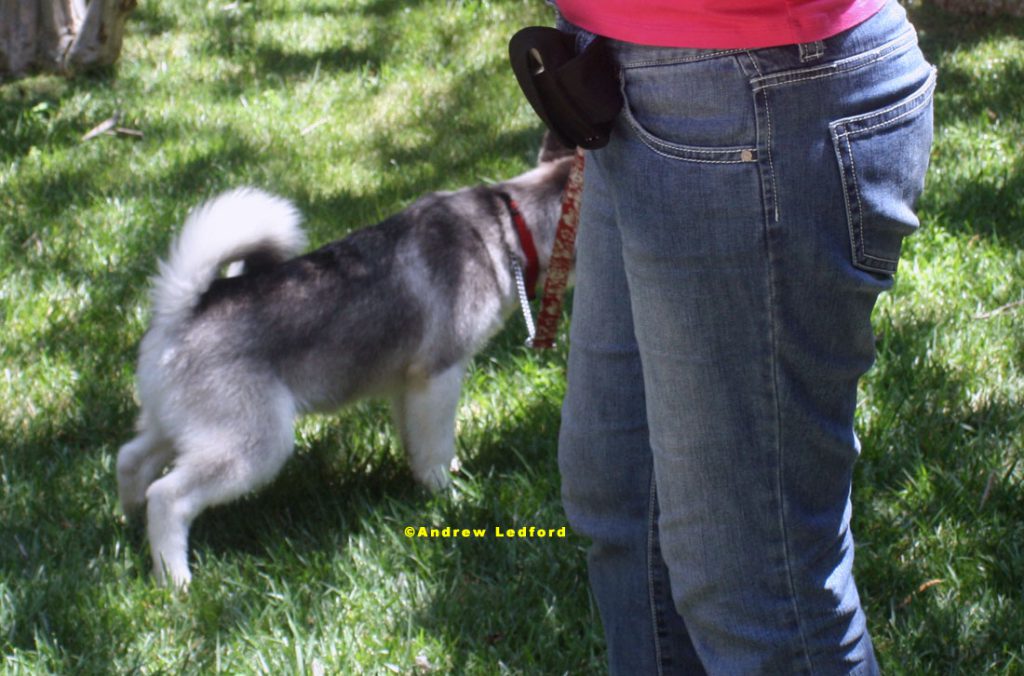
An experiment in not ignoring desired behavior and rewarding good behavior.
An extreme example is when I taught an active extreme hyper dog to act very calm by not ignoring the desired behavior. How did I do it? I sat in a large, fairly empty room, with a cup of dog food and when it acted calmer, I did not ignore the less active behavior, instead I rewarded the good behavior. It took several days to make the dog look like it was a calm, well balanced dog.
All I did during this time was sit and observe the dog, waiting for a chance to reward calm behavior.
Once the dog was calm while I was sitting, I would gradually become more active, standing then moving about.
While this is not practical for the average person, it was an enlightening experiment in using positive reinforcement.
The dog was still an active extreme dog, but it developed a great deal of impulse control.
If the rules or conditions varied much it would revert back to its baseline state of activity. However, for an experienced handler it was fairly easy to quickly get the dog back under control. A less skilled handler would stimulate the dog in a way that would elicit the active extreme behavior.
With difficult dogs the owner needs to become a good dog handler to have good dog behavior. That’s why I always teach those I work with how to handle the dog. You are not only getting dog training, but a crash course in dog handler training as well. If you don’t know how to properly handle the dog, it’s more likely to drift or revert back to its old problem behavior.
The active extreme hyper dog mentioned was very susceptible to being reconditioned to behave according to its basic physiological makeup. This was true even with additional impulse control exercise, teaching it extinction patterns, handling exercises, and obedience training.
But, it does show what can be done in the right conditions by not ignoring desirable behavior and rewarding the behavior you want.
I am wishing you the best in dogs and in life,
Andrew Ledford
714-827-4058

